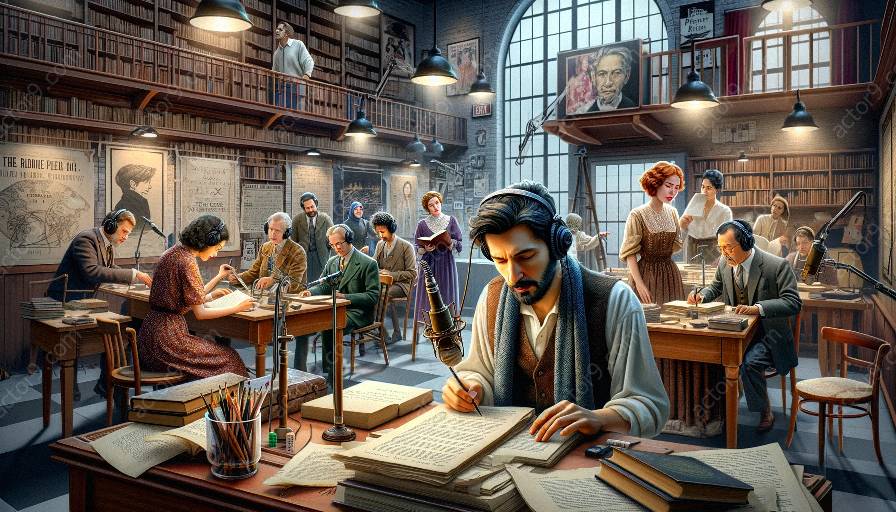Radio adaptations of stage plays and novels have been a popular form of entertainment for decades, captivating audiences through the vivid portrayal of stories. This exploration delves into how radio adaptation changes the audience's experience of a story, examining the unique characteristics and production aspects that contribute to the immersive nature of radio dramas.
Understanding Radio Adaptation
Radio adaptation refers to the process of converting stage plays or novels into audio dramas for broadcast on radio. This form of storytelling relies solely on auditory stimuli to engage the audience, offering a different experience compared to visually-driven adaptations. Radio adaptations often feature voice actors, sound effects, and musical accompaniments to create a multi-dimensional auditory experience.
Imaginative Engagement
One of the distinctive features of radio adaptations is their ability to stimulate the audience's imagination. Without visual cues, listeners are prompted to envision the characters, settings, and actions solely based on the auditory portrayal. This active participation of the audience in co-creating the visual aspects of the narrative can result in a more personalized and immersive experience.
Layered Soundscapes
Radio dramas production involves the meticulous creation of soundscapes to convey the story's ambiance and emotions. Sound design, including background noises, environmental sounds, and music, plays a crucial role in shaping the mood and atmosphere of the narrative. This layering of sound contributes to the audience's emotional and sensory engagement, adding depth and complexity to the storytelling experience.
Adaptive Interpretation
When adapting stage plays or novels for radio, the process often involves reinterpretation and restructuring of the original work to suit the medium's audio-specific constraints. This adaptive approach can lead to innovative narrative techniques and creative liberties, transforming the audience's perception of the story and characters.
Emotional Resonance
The absence of visual distractions in radio adaptation allows for a heightened focus on the emotional nuances of the narrative. Voice actors convey the characters' emotions purely through vocal inflections, emphasizing the power of spoken dialogue to elicit genuine sentiment. This heightened emotional resonance can profoundly impact the audience, fostering a deeper connection to the story's themes and the characters' inner turmoil.
Engaging Artistry
Radio adaptation is a true marriage of artistry and technical proficiency. From script adaptation and voice casting to sound engineering and direction, each aspect contributes to crafting a compelling auditory experience. The synergy of creative talent and technical expertise results in productions that captivate and enthrall audiences through the sheer power of audio storytelling.
Cultural Preservation
Beyond entertainment, radio adaptations also serve as a means of preserving cultural literary heritage. By breathing new life into classic stage plays and novels through audio dramatizations, radio adaptation ensures that timeless stories continue to resonate with modern audiences, bridging generational and cultural divides.
Empowering Accessibility
Radio dramas production facilitates accessibility to storytelling, reaching audiences regardless of visual impairments or limitations. This inclusivity allows individuals to immerse themselves in narratives that might otherwise be inaccessible to them, highlighting the democratizing influence of radio adaptation on the enjoyment of literature and dramatic performances.
Conclusion
Radio adaptation significantly transforms the audience's experience of a story, offering a mode of engagement that is distinct from visual adaptations. Through the artful manipulation of sound, the cultivation of imaginative engagement, and the preservation of cultural heritage, radio adaptations bring narratives to life in a way that is uniquely immersive and captivating.






















